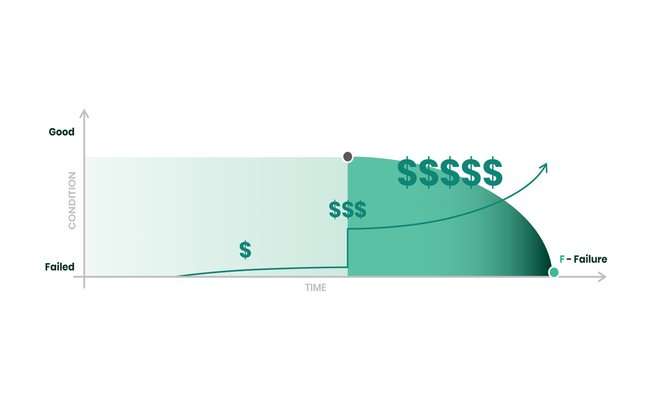
Benefits of automation extend beyond productivity in Asset Health Management
Intelligent automation of the processes and systems underlying asset health management not only increases productivity, but helps to increase safety, predictability, and profit. Here’s how.
The need for increased productivity, product quality, and safety is why we have machines in the first place and the need for continuous improvement in these aspects continues to drive perpetual innovation. From their earliest iterations, machines have worked 24/7, delivering consistently better product quality at a reduced cost to consumers. This is true across the broad spectrum of industries that rely on machinery assets to get products out the door.
In the meantime, the role of humans has shifted from craftsmanship to oversight. While we may no longer be doing the work machines were created to carry out, we are now responsible for taking care of and watching over these machines and ensuring their efficient operation and continuous improvement.
However, as machines and the tasks they perform become more complex, there’s a need for greater oversight. In response, the way we manage assets has evolved using sensors and data analytics helping us predict and prevent failure rather than reacting to it.
Leveraging automation and AI in concert represents the next step in this evolution. Here, we examine the benefits.
Greater predictability
In the simplest of terms, asset health optimization via sensors and online condition monitoring systems creates a more predictable plant environment.
By moving from manual data collection based on time intervals to automated monitoring and predictive maintenance planning, you can expect far less variance in plant productivity.
Properly calibrated machine-based systems are almost always on and never ‘forget’ to collect data, even on an outlying asset. And when the need does arise to collect data directly from a machine using a portable data collector or analyzer, the data collected is easily integrated into the condition monitoring database for a unified and holistic analysis. This removes any gaps in plant asset health knowledge.

Figure 1. The P-F curve illustrates the value of advance notification of machine changes
Of course, this isn’t to say that condition monitoring strategies will be better without human oversight. The fact is you need analytical and problem-solving capabilities coupled with condition monitoring and specific asset context expertise that can only be provided by a qualified, well-trained and experienced technician or engineer.
The best condition monitoring platforms complement what your plant personnel know from experience, codify it into the program, and provide advanced insights that are scalable across your fleet of assets.
The essential value of an advanced condition monitoring solution lies in helping you get to a root cause quicker and limiting the damage caused by failing production assets. Automating the first line of defense as much as possible eliminates a large amount of the false alarms that many operators experience today, and thus minimizes the impact on your production schedules and resource management.

Figure 2. Escalation of costs when assets continue to run while exhibiting signs of pending functional failure
Increased safety
Automation can help you augment your condition monitoring strategy with a host of timely machine condition notifications, alarms and insights that are delivered efficiently online and visible via a Human Machine Interface (HMI) and workspace that is wholly intuitive.
Combined with the expertise of machinery health experts—located onsite and off—this will provide critical intelligence and help you take action ahead of failures with safety consequences.
In fact, it is sometimes possible to see the start of an asset failure weeks or even months in advance. This allows for earlier action, helping you to protect the health of your assets, your employees and partners, the environment, and ultimately the company’s profit and reputation.
More effective use of human resources
The talent pool for expert-level technicians has been evaporating over time with no signs of replenishment anytime soon. One way to make more effective use of your human resources is to remove as many mundane and repetitive tasks from their plate as possible. Replacing portable monitoring systems with wireless condition monitoring systems can help while also reducing the need for technicians to enter areas that may be uncomfortable or present risk.
Relegating standard monitoring and machinery health data collection to an intelligent condition monitoring system built on proven algorithms and machine learning, serves as a co-pilot framework allowing key personnel to focus their decades of expertise and training on interpreting qualified alerts —not wasting their talents on manual machine data acquisition or finding anomalies.
Using a subscription or managed service can help you further maximize your resources and fill in any capability gaps. Combining advanced condition monitoring technology, cloud-enabled analytics and expert services, stack subscription offerings can also make it easier to start up, sustain or expand your condition monitoring program.
Increased profit
Automation, analytics and purpose-built AI all help increase productivity which in turn increases profit. Purpose-built AI is trained on a defined set of data inputs from known source types. In the context of condition monitoring, this means training the AI to look for asset health deterioration patterns in data streams for a known set of machines and from a known set of condition monitoring sensors for either simply general anomalies or inclusive of deterministic failure mode identification and recommendation remediation actions.
With this training, purpose-built AI can operate as a co-pilot filtering alerts and prioritizing those that matter. It can help drive first line analysis, diagnosis and prescriptions for known patterns (frequently occurring or recognizable failure modes) to free up team bandwidth. Early detection and diagnostics resulting from AI and analytics also support effective maintenance planning, so teams can spend less time fighting fires and dealing with emergency shutdowns.
Further savings can be achieved through reduced risk and downtime, avoidance of catastrophic failures, and redeployment of human resources towards more value-added tasks.
There’s also the immeasurable value of peace of mind that comes with more predictable performance.
Learn more
Contact us if you’d like to learn more about how we can help you harness the benefits of automation and optimize your asset health management.


